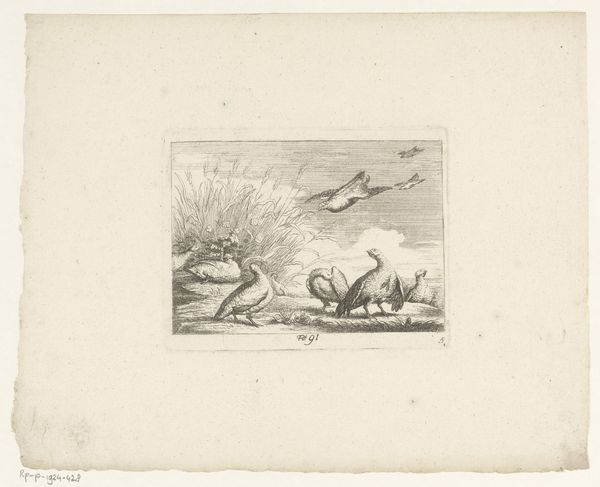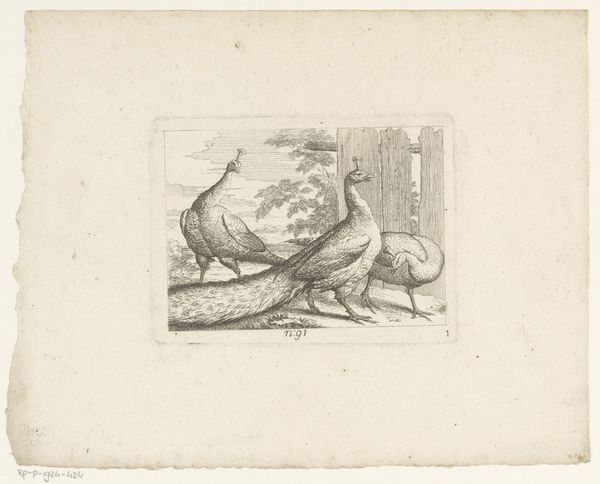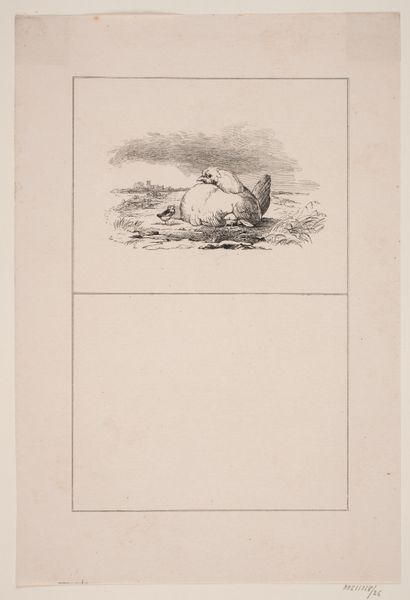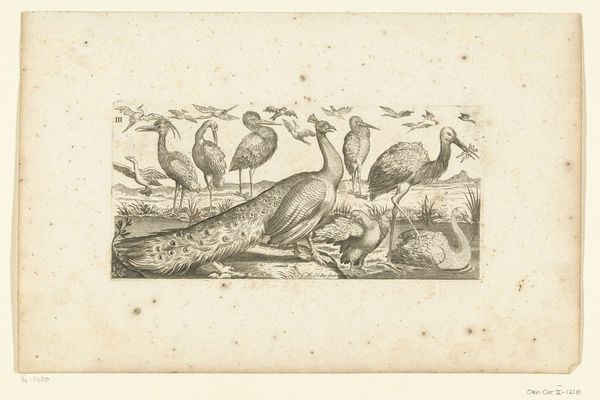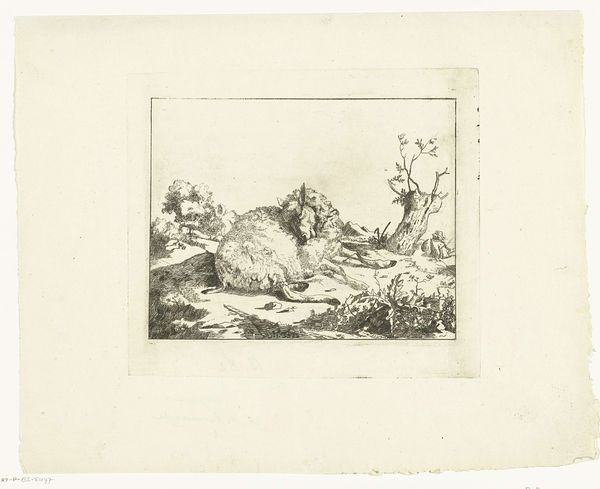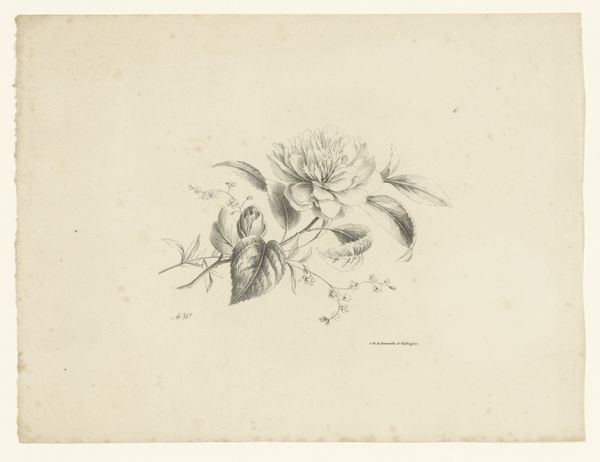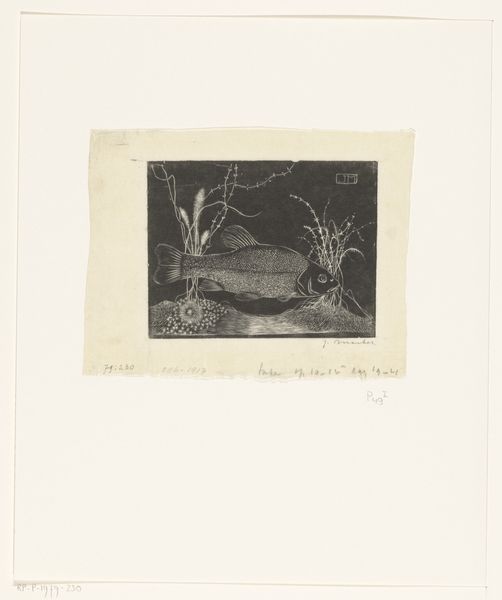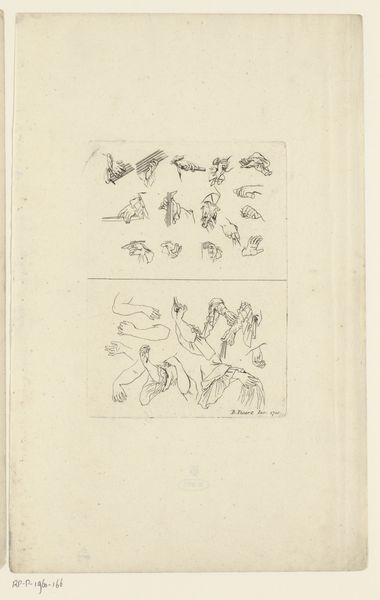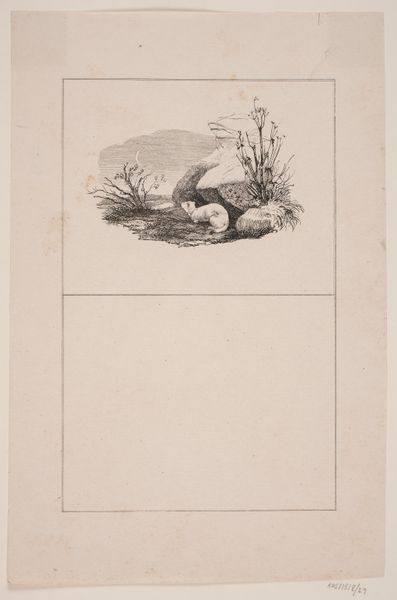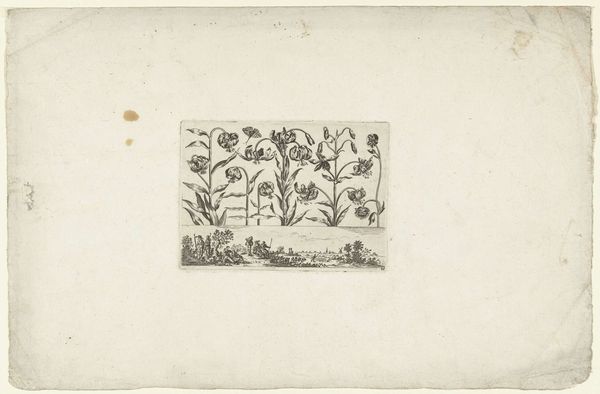
print, etching
#
baroque
#
animal
# print
#
etching
#
old engraving style
#
landscape
#
genre-painting
Dimensions: height 99 mm, width 122 mm
Copyright: Rijks Museum: Open Domain
Curator: This is Johann Georg Hertel’s “Landschap met vier reigers,” dating roughly from 1705 to 1775. The piece, currently held in the Rijksmuseum, is an etching. Editor: It feels almost like a quick sketch, capturing a fleeting moment in nature. The reigers, or herons, are delicately rendered. There's a sense of quiet observation, but also perhaps the raw materiality of the etched line itself comes through. Curator: Considering the historical context, Hertel was likely responding to an increased interest in naturalism. The etching process allowed for wider distribution of imagery, making landscapes accessible to a broader audience, thus shaping environmental awareness. What we should discuss is if the construction and circulation of these natural images serve colonial and extractivist projects. Editor: That’s fascinating. I’m more drawn to how the medium itself might inform the scene. The lines seem economically laid, there's an almost technical drawing-like feel, particularly with the reigers' distinct shapes and how their reflections hit the water, all captured through what must have been laborious engraving. You can almost imagine the artist hunched over the plate. Curator: It also evokes a sense of class and labor. This image romanticizes rural life. Did it engage with the actual labor of people inhabiting the depicted landscapes? What we perceive as nature is invariably culturally and historically mediated through those things. Editor: Indeed, it presents nature as a site of serenity. Considering the intended audience, perhaps the etching served as a reminder of something tangible and accessible even as industrial life emerged and labor intensified in cities. The print could also act as an exercise for artisans or beginner draftsmen, which is often something we forget to think about when looking at works such as these. Curator: We could consider its visual dialogue with earlier landscape traditions and even its function in colonial projects of claiming and documenting. By whom, how, and for whom were these prints made? What implications did they carry then, and now? Editor: This exercise emphasizes what initially appears as a peaceful landscape scene reveals underlying tension and materiality. Curator: Yes. This reminds us of the layers of meaning embedded in even seemingly straightforward depictions.
Comments
No comments
Be the first to comment and join the conversation on the ultimate creative platform.


